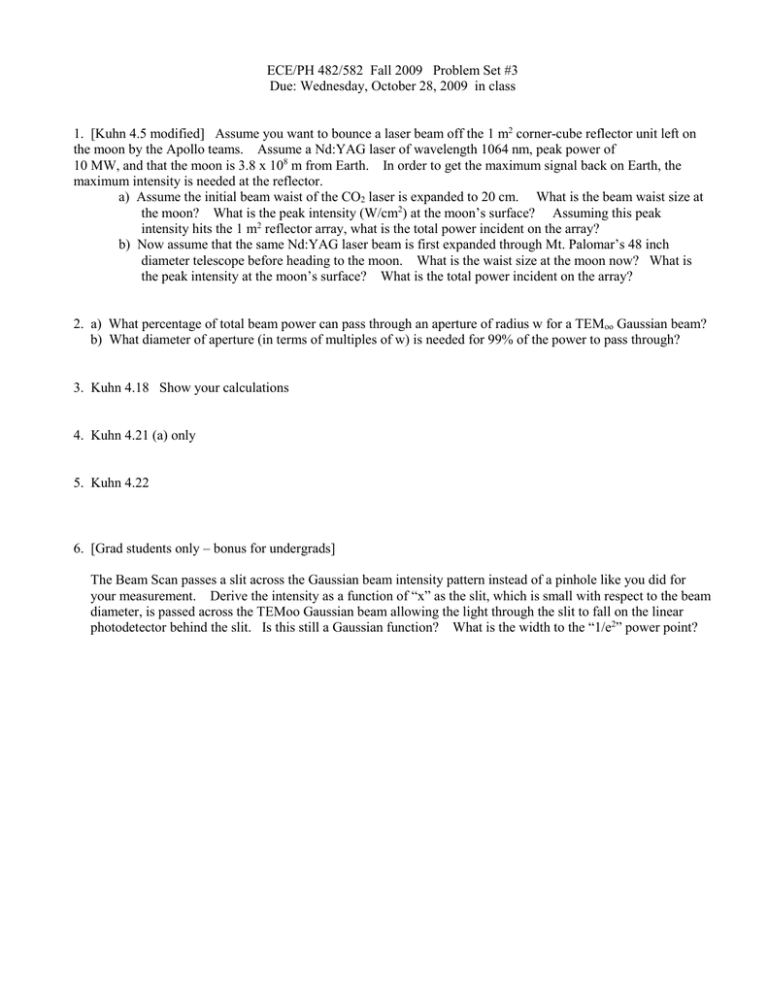ECE/PH 482/582 Fall 2009 Problem Set #3
advertisement

ECE/PH 482/582 Fall 2009 Problem Set #3 Due: Wednesday, October 28, 2009 in class 1. [Kuhn 4.5 modified] Assume you want to bounce a laser beam off the 1 m2 corner-cube reflector unit left on the moon by the Apollo teams. Assume a Nd:YAG laser of wavelength 1064 nm, peak power of 10 MW, and that the moon is 3.8 x 108 m from Earth. In order to get the maximum signal back on Earth, the maximum intensity is needed at the reflector. a) Assume the initial beam waist of the CO2 laser is expanded to 20 cm. What is the beam waist size at the moon? What is the peak intensity (W/cm2) at the moon’s surface? Assuming this peak intensity hits the 1 m2 reflector array, what is the total power incident on the array? b) Now assume that the same Nd:YAG laser beam is first expanded through Mt. Palomar’s 48 inch diameter telescope before heading to the moon. What is the waist size at the moon now? What is the peak intensity at the moon’s surface? What is the total power incident on the array? 2. a) What percentage of total beam power can pass through an aperture of radius w for a TEMoo Gaussian beam? b) What diameter of aperture (in terms of multiples of w) is needed for 99% of the power to pass through? 3. Kuhn 4.18 Show your calculations 4. Kuhn 4.21 (a) only 5. Kuhn 4.22 6. [Grad students only – bonus for undergrads] The Beam Scan passes a slit across the Gaussian beam intensity pattern instead of a pinhole like you did for your measurement. Derive the intensity as a function of “x” as the slit, which is small with respect to the beam diameter, is passed across the TEMoo Gaussian beam allowing the light through the slit to fall on the linear photodetector behind the slit. Is this still a Gaussian function? What is the width to the “1/e2” power point?

